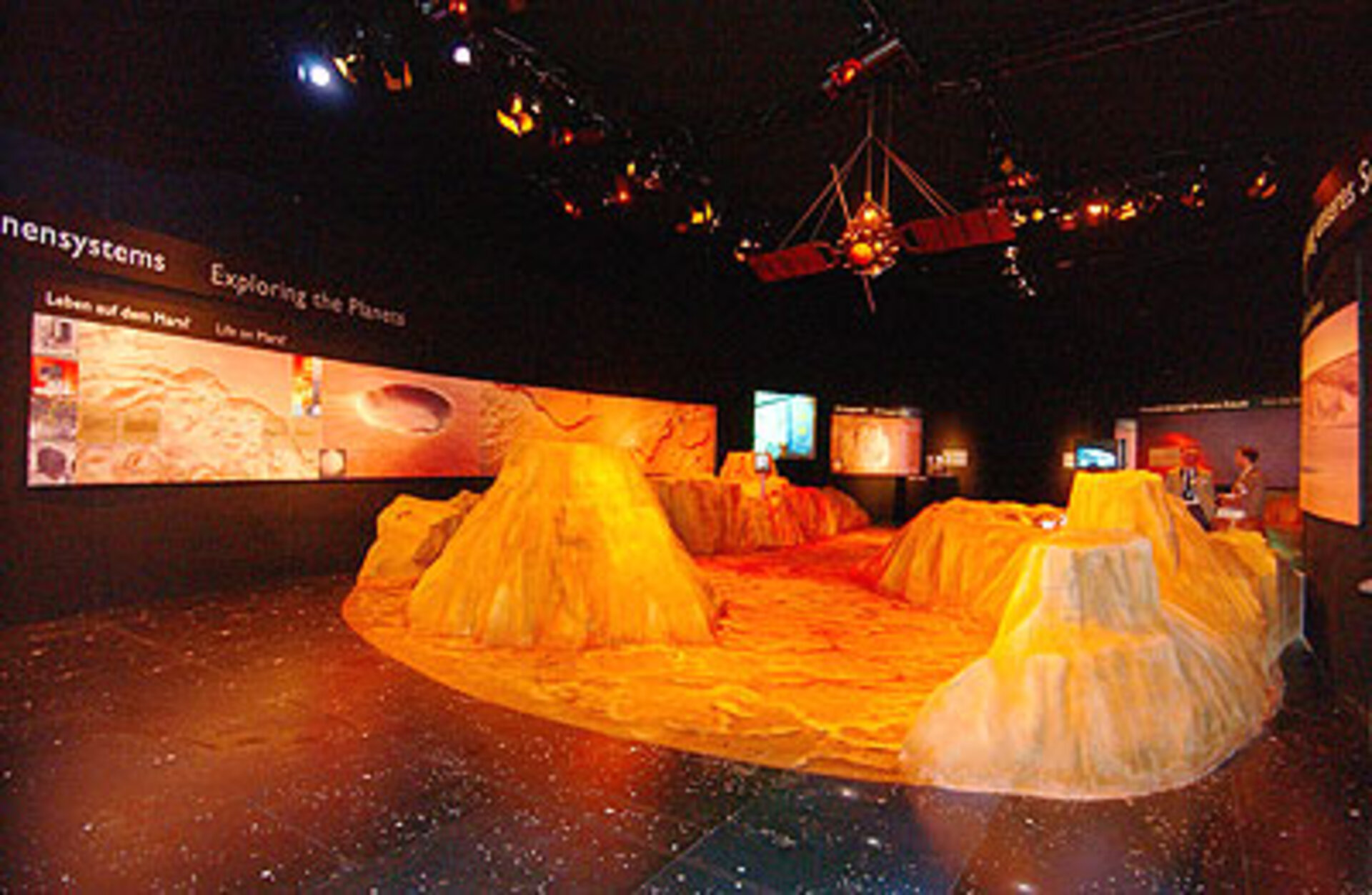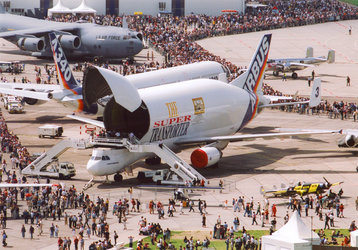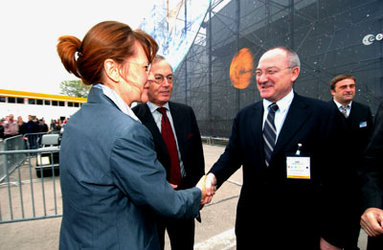Space, culture and communication at the Berlin Air and Space Show
Space for life is the theme of the special pavilion devoted to European space activities at the International Aerospace Exhibition and Conference (ILA), taking place this week at Berlin’s Schoenefeld airport.
ILA is organised every two years by the German Aerospace Industries Association (BDLI), to highlight the latest developments in the international aerospace industry and in civil, military and private aviation fields. For ILA week the city of Berlin is transformed into a meeting place for political leaders, industry and the general public from all over the world.
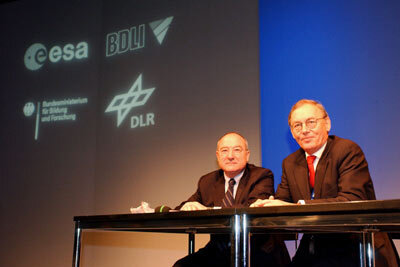
The space pavilion, covering over 1350 metres, leads visitors on a voyage of discovery of European space activities. Entitled Space for Life, Europe in Space, Deutschland in Weltraum, the pavilion is organised jointly by ESA, the German Aerospace Centre (DLR), BDLI and the German Federal Ministry of Education and Research (BMBF).
The pavilion was officially inaugurated by the German Chancellor Gerhard Schröder, accompanied by ESA’s Director General Jean-Jacques Dordain, Sigmar Wittig, Chairman of the Executive Board of DLR, and BDLI President, Rainer Hertrich.
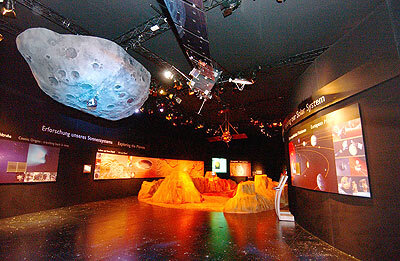
Why Space for Life? “Space enriches citizens' daily life by providing innovative services, for instance in telecommunications. Our programmes contribute essentially to answering the most relevant questions of modern society at the beginning of the 21st century, such as transportation, protecting the environment and many more”, explains Volker Kratzenberg-Annies, Head of ESA’s Communications Department. “Contributions from space to peoples’ daily lives are not limited to material benefits and useful services only. The general public’s curiosity for missions involving astronauts as well as their widespread interest in sharing scientific insights and discoveries, for instance a better understanding of our cosmic neighbourhood and the origins of life, indicate an unbroken fascination for space. In other words: space also enriches our lives culturally."

“Space for Life is a journey from the Sun, our life-giving star, to the Earth”, describes Maria Menendez, responsible for ESA exhibitions. Entering through a ‘solar tunnel’ with real imagery from SOHO, the ESA/NASA solar observatory, visitors learn about the European missions investigating our solar system. Leafing through the interactive book ‘The enigma of life’, we enter a world of mysteries and space discoveries, through a combination of moving images and texts.
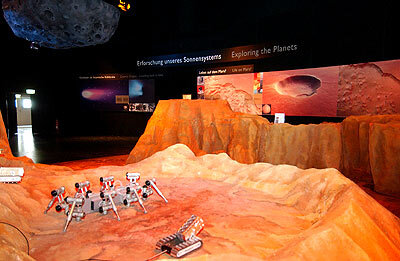
Walking on a Martian surface and surrounded by spectacular Mars Express images, visitors find themselves immersed in a space environment. On the Martian surface there are models of rovers and robots. Suspended overhead is a comet, one of the oldest objects in the solar system. ESA’s comet chaser Rosetta, carrying the Philae lander, began its 10-year voyage towards comet 67P/Churyumov-Gerasimenko this March.
Reaching our blue planet, visitors see how our fragile and beautiful world is monitored by satellites providing scientists with accurate information and data on the Earth's atmosphere, oceans, land and ice. Imagess from Europe’s Meteosat Second Generation (MSG) weather watcher and from Envisat, ESA's environmental satellite, give the visitor a detailed picture of Earth.
Our journey continues in the world of telecommunications and navigation with a constellation of Galileo, Europe’s own global navigation satellite system that will provide a highly accurate, guaranteed global positioning service. Journeying back to Earth, we see exciting 3D images of the International Space Station (ISS), a model of its final configuration and the Automated Transfer Vehicle (ATV), one of Europe's major contributions to this giant international space programme.
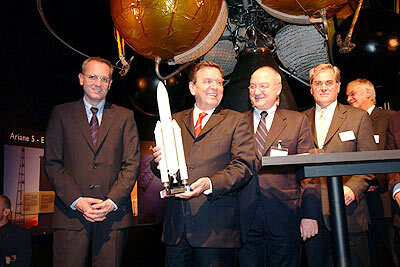
Throughout the tour we also learn more about how European satellites lift off into space, with Ariane 5, Vega and future launchers.
Various dedicated events with specialists are organised throughout the week for invited audiences and general public alike. The Space for Life pavilion is an excellent opportunity for professionals to meet experts from Europe in a dedicated business-to-business area. A new ‘Space Incubator’ network to encourage new ventures in the space field is just one of the many activities of specific interest to industry.
For the younger visitors there are regular guided tours for local schools. The shortage of young women opting for careers in science and engineering remains a European-wide issue, and one of the topics of a dedicated workshop on equal opportunities in the space sector. Daily events of interest to the wider public include 3D movies on Earth observation, navigation, and International Space Station and Solar System missions, a space quiz with ESA astronauts, not forgetting first results and spectacular images from ESA’s Mars Express.
For further information, please contact:
Maria Menendez, Head of Exhibitions
Tel. + 33(0)1.53.69.7167
Fax. + 33(0)1.53.69.7690
Wendy Slater, Exhibitions officer
Tel. + 33(0)1.53.69.7418
Fax. + 33(0)1.53.69.7690


